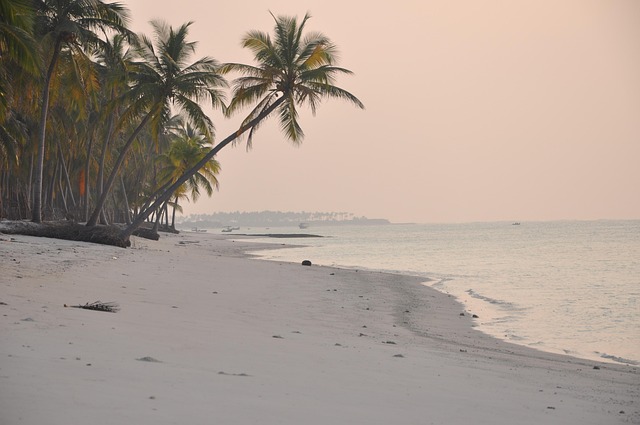Reach us
Blog

26
Mar 2025
Visiting Lakshadweep? Know the Permits, Activities & Restrictions
“The sea, once it casts its spell, holds one in its net of wonder forever.” This saying perfectly captures the essence of Lakshadweep. With it’s pristine white sand beaches, tourquoise waters, and colourful coral reefs, Lakshadeep truly gives you an unforgettable and enchanting experience.
Why Travel to Lakshadweep?
Lakshadweep is a tropical archipelago of 36 atolls and coral reefs in the Laccadive Sea, off the coast of Kerala, India. Not all of the islands are inhabited, and only a few are open to visitors (permits required). For travelers, beach lovers, and adventurers, the sea and the underwater world here represents freedom, discovery, and a deep connection with nature.
Lakshadweep is a perfect alternative to international beach destinations like Maldives beacuse of it’s affordability and accessibility. Lakshadeep offers an eco-friendly, pollution-free environment and it is less crowded than its counterparts.
Do You Need a Permit to Travel to Lakshadweep?
All visitors to Lakshadweep, including Indian nationals and foreign tourists, must obtain an entry permit issued by the Lakshadweep Administration. This requirement is enforced to protect the islands’ delicate ecosystem and preserve their cultural identity. The official Lakshadweep Tourism website highlights this in order to protect the indigenous Scheduled Tribes, who make up about 95% of the region’s population.
Key Steps to Obtain a Permit:
- Apply Online: Submit an application at least 14 days before your travel date via the official Entry Permit Portal epermit.utl.gov.in .
- Police Clearance Certificate (PCC): Indian travelers must provide a PCC from their local police commissioner .
- Local Sponsorship: A local sponsor (e.g., a resort or tour operator) is required to vouch for your stay. Companies like Lakshadweep DMC, which can be contacted via lakshadweepdmc.com, specialize in arranging permits and accommodations, ensuring a seamless travel experience.
- Island-Specific Access: Permits are valid only for listed islands and travel dates. Foreigners are restricted to Agatti, Bangaram, and Kadmat, while Indians can visit Agatti, Bangaram, Kadmat, Kavaratti, Kalpeni, and Minicoy .
- Heritage Fee: A daily fee of ₹200 per person is mandatory, funding environmental preservation efforts .
How to Get to Lakshadweep
To reaching Lakshadweep, travelers must pass through Kochi (Cochin), Kerala, as it serves as the gateway to the islands. Travelers can choose between flights and ships, both operated under the Lakshadweep Administration.
- By Air: Flights from Kochi to Agatti Airport (operated by Air India) take ~1 hour. From Agatti, boats or helicopters connect to other islands .
- By Sea: Seven passenger ships depart Kochi, with journeys lasting 14–20 hours. High-speed vessels operate seasonally .
Best Time to Visit Lakshadweep
The best time to visit Lakshadweep is from October- May for pleasant weather, ideal for water sports and exploring the islands, with temperatures ranging from 22°C to 30°C.
Allowed Activities: Exploring Lakshadweep’s Wonders
Lakshadweep offers a range of eco-friendly activities, emphasizing marine conservation and cultural immersion:
- Snorkeling and Diving: Explore vibrant coral reefs teeming with marine life. Guided tours are available on Bangaram and Kadmat islands .
- Kayaking and Lagoon Tours: Paddle through serene lagoons, discovering hidden coves and birdlife .
- Dolphin Spotting: Join boat trips to observe playful dolphins in their natural habitat .
- Cultural Experiences: Visit Kavaratti’s Ujra Mosque and engage in traditional fishing with locals .
- Beach Picnics and Yoga: Relax on pristine shores or practice sunrise/sunset yoga sessions .
Restrictions and Prohibited Activities
Lakshadweep enforces strict rules to safeguard its environment and culture:
- No Coral Touching: Destroying or touching coral reefs is punishable by law .
- Alcohol Ban: Alcohol is prohibited on all islands except Bangaram .
- Coconut Tree Restrictions: Climbing coconut trees or picking coconuts is illegal, as groves are privately owned .
- Island Access Limits: Unauthorized entry to restricted islands (e.g., uninhabited atolls) is banned .
- Swimwear Guidelines: Respectful swimwear is mandatory; revealing attire is discouraged .
Conclusion: Moving Towards Responsible Tourism in Lakshadweep
Lakshadweep’s untouched beauty comes with great responsibility-to travel sustainably and respectfully. As an eco-sensitive region, the islands rely on responsible tourism to preserve their rich marine ecosystems and indigenous communities. Travelers can contribute by following regulations such as the alcohol ban, coral protection laws, and island access limits.
